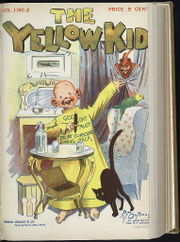I’ve written about fakes before, since I consider finding one both exciting and annoying.
They are exciting because some detective work is usually necessary to figure out that it is a fake (rather than an anomaly, or just a reproduction), and they are annoying because trying to explain to someone they have a fake can be tedious.
“But the dealer swore he took that from Martha Washington's grave himself!”
“The guy who sold it to me said it was all original - now you say the running boards are repro?!”

I try to tell people to research something before buying it. Most people find research off-putting in that they believe such an endeavor is overwhelming. “Goodness, I’m no historian! How will I know if it’s real? I’ll just buy it and hope for the best.”
This is partially true – a connoisseur is much more knowledgeable about a specific product than a novice. Appraisers understand market dynamics and different types of value. Museum curators are immersed in their field, and are excellent (usually) unbiased resources. For some forms of authentication, a scientist is required (for example, dendrochronology, paint analysis, carbon dating).
So yes, hiring a professional is always best; however, if the piece doesn’t warrant that level of expertise, or you only have a passing interest, doing your own research can be as easy as putting both your brain cells together. Here’s my basic starter guide to determining the authenticity of anything:
Google it.
Some things, such as Dali prints, are faked so often that it’s laughable. Most appraisers go into a project involving Dali prints expecting some (if not all) to be fake. Heck, eBay has it's own article on fake Dali prints. The signatures are wrong, the numbering of the print is wrong, etc. Park West Gallery on cruise ships had a particularly bad habit of selling these (only in international waters, of course). Using Google to see what others have written on the subject is quick, easy, and free. Certain cars and vintages of wine are also faked.

Common Sense.
Use what knowledge you already possess. I was cataloging the impressive collection of a certain museum last year, and came across a small cup and saucer that purportedly was unearthed after being buried for 400 years. The cobalt decoration was poorly executed, and the bottom of the cup was clean. By “clean,” I mean that my 9 month old coffee cup at work has a dingier bottom than this very antique archaeologically-recovered tea cup. It was obvious that this was, in fact, not a genuine piece (and as it turns out, the person from whom the museum acquired the piece was a shady character anyway).
If something seems “odd” or “funny,” then it probably is.
Not the actual cup.
Recently a person bought table that he swore was antique. “Look how old it is! I think it must be at least from the 1920s.”[ii] Upon further inspection, all screws were Phillips-head, and didn’t appear to be replacements. Phillips-head screws were not available until the 1930s.[iii]

Plausibility.
Sometimes you know the object is probably not fake, but you want to know if the it is original, rather than a reproduction or something fabricated “in the style of.” One must delve a little deeper into the background of the object, rather than focus on the object itself. Were they making that style of chair in Virginia before the Civil War? Did that bottling company ever use anything other than green glass?
A woman once emailed me claiming to have some silver than had been passed down in her family for 500 years. I quickly learned that the company who made the silver had only been in business since the 18th century. Obviously no special dating or knowledge of silver hallmarks was required, as the company did not exist 500 years ago. Her silver was not “fake;” rather, it was simply not as old as she was telling everyone.
One way of quickly figuring out that something is suspicious is discovering that there were more sold than there were originally made. A good example of this was detailed in this excellent article in the New Yorker:
In some cases, the bottle, the label, and the capsule all appeared genuine, but the rarity of the wine alone was ground for suspicion. Koch owns two magnums of Lafleur from 1947, for instance. “Forty-seven is the great Lafleur,” Molyneux-Berry said. But, he continued, he has heard that in 1947 the vineyard bottled only five magnums. “What’s the chance of him having two out of five?” he asked. Edgerton maintains an online database that tracks auction sales and prices. Nineteen magnums of ’47 Lafleur have sold at auction since 1998.[i]

If after performing your own research, you still think you might have something special, please consider hiring a professional to learn more, including how and if you should sell it, or the best method of storing/displaying/preserving it.

Great article discussing wine, fraud, appraising, and why Christie’s Auctions can’t always be trusted: http://www.newyorker.com/reporting/2007/09/03/070903fa_fact_keefe#ixzz1CFt62UEK
[i] A Reporter at Large, “The Jefferson Bottles,” The New Yorker, September 3, 2007, p. 106.
[ii] Note: Unless we are discussing rugs or cars, the word “antique” ONLY applies to items 100 years old, or older. For items younger, the term “vintage” would be appropriate.
[iii] Popular Science, January 1936, page 38.








